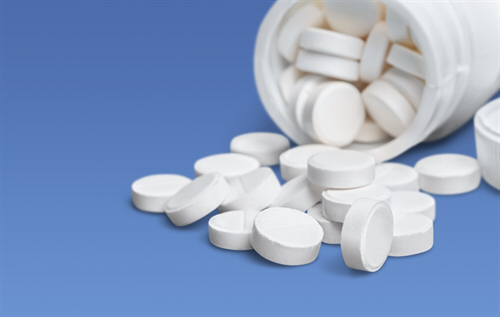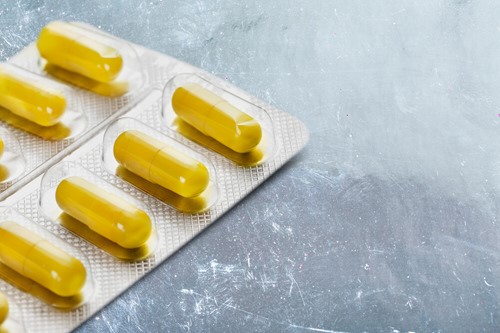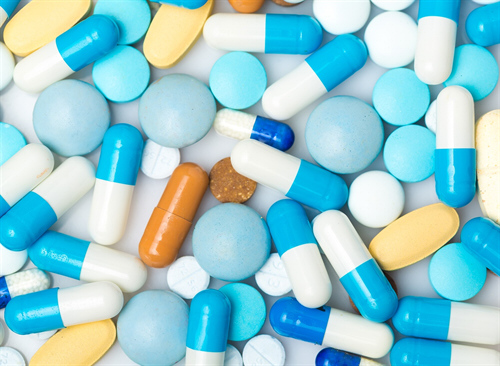Additional Medications Frequently Prescribed Post-Op
“Not all the medications are prescribed to every patient, we simply tried to prepare the most exhaustive list.”

Dear Patient,
In response to frequent questions about additional medications that our medical team prescribes upon hospital discharge, we prepared the following information. Please keep in mind that prices are subject to change and vary among pharmacies, lately medications in Mexico have been going up in price due to the general raise in the cost of living.
The most common medications prescribed are:
- Zofran, $15-20 USD per box of 10 pills (also known as Vylkor, Ondansetron, 8 mg pills, take 1 every 8 hours for 5 days). This medication helps with nausea, which is a very common side effect after surgery. Zofran is an effective anti-nausea medication that is used during your hospital stay and is recommended after discharge. Dehydration increases nausea, and the doctors think ahead to help you feel more comfortable knowing that you may get dehydrated and suffer from nausea for some time.
- Dexilant (or Dexivant), $40-45 USD per box of 14 pills (also called Dexivant, 60 mg pills, take one a day for 10 days). This is the best antacid available on the market today. The main cause of postoperative discomfort is stomach acid, it causes pain, heartburn, nausea, stomach swelling that in turn decreases your stomach volume and doesn`t allow you to stay hydrated. This applies to both gastric RNY or Mini bypass patients whose anastomosis is healing and is developing scar tissue, as well as to gastric sleeve patients who often suffer from postoperative acid reflux. Decreasing stomach acid production will decrease stomach swelling, nausea, will allow for a better scarring process, and allow you to consume more fluids and feel less pain and discomfort. Dexilant is much more effective than Nexium or Omeprazole, it is available over the counter in Mexico but requires prescription in the US. You can take advantage of this opportunity and purchase it while in Mexico.
- Omeprazole, $7-10 USD 120 pills (20 mg pills, take every 12 hours with food for 2 months), or Nexium 40 mg 14 pills, $35-40 USD. We recommend purchasing a 2-month supply of Omeprazole as you will need to take antacids daily for at least 2 months after surgery while your stomach is recovering. The stomach keeps always producing acid. Remember that your stomach has just been cut/injured. Its own acid continues irritating the incision line 24/7. Any way to decrease this irritation will be helpful and will provide a more comfortable recovery.
- Galaver suspension, $5-10 USD per box of 10 doses (also called Mylanta in the US, 10 mg gel packets or 1 spoonful, take every 8 hours on an empty stomach for 2 – 3 weeks). Mylanta is available over the counter in the US. It coats the stomach on the inside thus protecting it from acid, nausea and helps with gas. This medication proved to be very effective during the first few weeks of recovery, especially when trying new foods that cause nausea. Our nutritionist highly recommends it.
- Buscapina, $12-15 USD per box (10 mg pills, take 1 every 8 hours only if needed). This medication is very effective in case of stomach or intestinal spasms, also helps with back pain and menstrual cramps. When trying new foods or liquids, everyone`s reaction may be different. Some will experience severe stomach and intestinal cramps reacting to something acidic or a thicker texture, this medication helps to achieve quick relief.
- Pemix, $25-30 USD per box of 25 pills (1 mg pills, take 1 every 8 hours for 10 days). This medication helps to relax lower stomach sphincter Pylori (for gastric sleeve patients only), which in turn allows for the stomach acid to proceed further down into the small intestine faster. As a result, we achieve relief from acid reflux, nausea, stomach pain caused by the acid. In the US it requires a prescription.
- Loperamide, $6-8 USD per box (2 mg pills, take 1 every 8-12 hours for 1-3 days if needed). This medication is prescribed in case of postoperative diarrhea caused by antibiotics.
- Lactulax suspension, $20-25 USD per bottle (a laxative that many of our patients purchase due to a high frequency of constipation soon after surgery).
- Ketorolac, $4-6 USD per box of 4 pills (30 mg pills, take 1 pill sublingually every 6 to 12 hours as needed). This medication is prescribed for pain and is available in the US under the brand name Toradol (prescription is required).
- Celebrex, $70-75 USD per box of 20 pills 200 mg, or $92-95 USD per box of 30 pills, or Meloxicam (15 mg) – pain killers (in the US prescription is required), stronger alternatives that are safe after WLS, recommended for severe headaches, menstrual cramps, arthritis pain, general postoperative pain, etc.
- Paracetamol (Tempra forte), $7-10 USD per box of 24 pills, 650 mg, and Stadium, $25-30 USD per box of 10 pills (25 mg pills), are also recommended as stronger pain relief options if Ketorolac and Tylenol are not sufficient.
- Clotrimazole, $7-10 USD per tube of 20 gr (2% cream), recommended for yeast infections that ladies sometimes develop because of taking antibiotics.
- Xarelto, $130-140 USD per box of 28 pills (20 mg pills, take 1 per day normally prescribed for 10 days). This medication is a blood thinner prescribed to patients with higher risk of blood clots as a preventative measure.
- Eliquis, $47-60 USD per box of 20 pills (2.5 mg pills, normally prescribed 1 pill every 12 hours for 10 days, but depending on the patient the time frame could increase to 30 days) is another type of a blood thinner that is prescribed to the patients who are already using it on a regular basis and those with certain cardiovascular issues.
- Enoxaparin, $100-120 USD per box with 2 injections (also called Clexane, 60 mg injections, usually prescribed 1 injection per day for 10 days or more). This blood thinner is very rarely used, in most cases recommended for patients with previous pulmonary embolism or deep vein thrombosis episodes (PE or DVT).
Not all the medications are prescribed to every patient, we simply tried to prepare the most exhaustive list.
You do not have to purchase any of these medications, it is your personal decision. The prescription is based on the doctors` experience and understanding of your individual needs (some patients suffer from gastritis, esophagitis, GERD, etc.). The doctors pursue 2 goals: first, your safety when prescribing blood thinners for patients with higher risk of blood clots, secondly, your comfort during recovery (medication reduces surgery side-effects significantly).
Written by Go Light Bariatrics
More From This Category
Left-Side Pain After Bariatric Surgery
Sharp stabbing pain under the left rib cage is very common at later recovery stages (even 6+ months post-op). This type of pain that takes your breath away is often described by our patients as if someone were stabbing their left side with a knife.
Left Shoulder Pain After Gastric Sleeve or Gastric Bypass Surgery
Manage post-surgery left shoulder pain effectively. Discover causes & effective solutions for gastric sleeve and gastric bypass patients.
Painkillers and anti-inflammatories, acceptable options after weight loss surgery
Painkillers and anti-inflammatories, acceptable options after weight loss surgery " Read More "Always consult with a medical professional before using any medication" After any type of bariatric weight loss surgery, there are certain limitations regarding painkillers and anti-inflammatory medications that can be safely used without damaging your small new stomach.…
Additional Medications Frequently Prescribed Post-Op
Additional Medications Frequently Prescribed Post-Op " Read More "Not all the medications are prescribed to every patient, we simply tried to prepare the most exhaustive list." Dear Patient, In response to frequent questions about additional medications that our medical team prescribes upon hospital discharge, we prepared the following information. Please…
What to Expect During Your Weight Loss Surgery Hospital Stay?
What to Expect During Your Weight Loss Surgery Hospital Stay? Read More "Learn what you can expect during your Weight Loss Surgery Journey from the moment you arrive until we say goodbye." Learn what you can expect during your Weight Loss Surgery Journey at Florence hospital stay from the moment you arrive until…






0 Comments